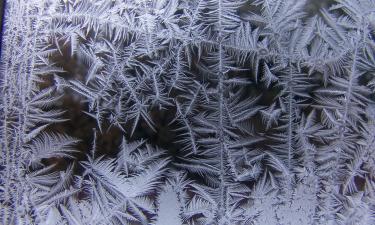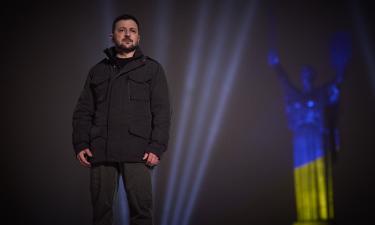20 tons of radioactive wastes by our side
Last year Russia made a resolve that shook the world, it allowed import of spent nuclear fuel from other countries. The Atomic Ministry presented really very convincing arguments that excluded any possible objections from the State Duma, Federation Council or Russian President himself as concerning the problem. The Ministry was really very convincing, but it is not always easy to realize words in practice, this article is another confirmation of the fact.
Saving melting
I knew about a unique technology for radioactive metal melting ten years ago from one of the technology’s authors, former director of the Sosnoby Bor department of the All-Russian research and design institute of energy technologies Yeugeny Konstantinov.
He told me then: “Amount of radioactive wastes stored in the country is extremely great. But they are in the dead weight, not processed and consequently, require more and more financing for maintenance. It is an awful black hole for the economy! We suggest melting as a new way of nuclear wastes processing.”
In Konstantinov’s words, melting of metal radioactive wastes is very much like a revolution. First of all, after melting nuclear wastes are expected to reduce several times and consequently require less radioactive wastes disposals, that are extremely expensive. Second, bars of melted radioactive wastes are less dangerous for storage, as radionuclids are inside the metal in this case. So, melting is a really good way to prevent radioactive wastes from leakage because of poor storage conditions. And finally, Russian scientists discovered a know-how: if special fusing agents are added to melting furnace, not active but pure metal can be received as a result.
Several years later, on September 1, 1995, Russia’s Government adopted a target program “Processing and utilization of metal radioactive wastes” based on the melting technology.
Substitution
A new white two-storied building was built on the premises of the Leningrad nuclear power plant within two years. A unique enterprise, ZAO Ecomet-S is the owner of the building. It is Russia’s first private company working with radiation technologies. The Ministry of Atomic Energy target program rates the company the leader in melting of radioactive metals. What is really very important here is that the company managed to attract great investment in the construction, for example, Gazprom’s credit made up over $10 million.
Direction of the Leningrad nuclear power plant stated, it was ready to supply electricity, water, heat and security to the private company, because it understood importance of the problem.
On October 13, 2000 Deputy Minister of Atomic Energy Valentin Ivanov signed a resolution #319-P and recommended directors of the Ministry’s enterprises to transport radioactive metal to Sosnovy Bor. The Siberian chemical enterprise, Angara electrochemical plant and several others were given the instruction.
Head of the Sosnovy Bor ecological and environmental protection department Natalya Malevannaya says: “The instruction was rather unexpected for us at that moment, as we thought it was not right to be in command of the city’s fate without previous coordination with the local authorities. Indeed, problem of spent nuclear fuel at the Leningrad nuclear plant is really pressing enough. Over 30,000 burnt fuel installations have piled up at the Gulf of Finland shores. When construction of the nuclear plant was still in the process, it was supposed that spent nuclear fuel would be removed from the area for processing. But within 25 years since that time no technology for spent fuel processing has been developed by the Ministry of Atomic Energy. The Leningrad nuclear power plant stores its spent fuel itself and very likely to do it in the future.
Depositaries of liquid and firm radioactive wastes are filled up at the nuclear power plant. Besides, there are three nuclear test plants in Sosnovy Bor. And despite the unfavorable situation in the area, the Ministry decided to deliver spent nuclear fuel right to that place.
Then the Ministry of Atomic Energy suggests that ZAO Ecomet-S can also “process nuclear submarines, ships and other vessels of the Russian Navy.” The problem was also discussed at a Leningrad regional government session on January 17, 2002. And the local authorities, once again, seem to be quite unaware of the plans.” Natalya Malevannaya also adds, the Ministry violates RF legislation and interests of local population.
Radioactive smuggling
Last autumn, October 16, the green movement of Sosnovy Bor kicked up a row when a railway car with 20 tons of radioactive wastes was discovered at the railway station of Kulische. It was an event that could hardly be imagined several years ago. The radiation made up 15,000 microroentgen an hour, that was 1,000 times more than the natural radiation level. There was no special marking on the car, and passengers boarded on suburb trains quite nearby.
Oleg Bodrov, chairman of the Green World public charitable organization says: “We found out that the dangerous car was delivered to Ecomet-S from Udmurtia with violation of norms, without escorting and necessary documents. The Ministry of Atomic Energy took up radioactive smuggling.”
In Bodrov’s words, freight of a similar kind was delivered to Sosnovy Bor five times already; and Ecomet-S melted about 160 tons of spent nuclear fuel taken to the city from other places.
Metalists
So, the reasonable suggestion of scientists turned out to be a great evil. Why did people agree to process dangerous wastes? Some experts say, this is because of pure metal that the enterprise gets as a result of processing. Capacity of the processing line is over 8,000 tons of metal bars a year; supply of spent nuclear wastes in Russia is estimated at 600,000 tons. Great part of the wastes is made up by precious metals of high refinement degree, like copper, titanium, nickel, high-alloy steel, aluminum.
The mentioned above target program of the Ministry provides for handing of “metal radioactive wastes in ownership of processing enterprises with following burial of secondary wastes.” Thus, the technology promises unbelievable profits for the private company, tens of millions of dollars every year.
Over the past year Ecomet-S melted about 1,500 tons of wastes, at the time when reserves of the Leningrad nuclear power plant make up 25,000 tons.
A scandal between Ecomet and Leningrad special enterprise Radon, where wastes of the Leningrad nuclear power plant are stored as well, broke out 1,5 years ago. The scandal is about opening of Canyon 24 at the building 668 B2 that had been preserved ten years ago. There are German silver pipes in the canyon. With its plan to open the canyon Ecomet-S is concerned more about non-ferrous metals, not radiation safety, director of the enterprise Radon, Mikhail Yakushev says.
The governmental target program directs Ecomet-S at production of melting plants and their installation at the enterprises of the Ministry of Atomic Energy. Over the period of 1998 – 2002 four plants of this kind are to be produced for processing of up to 35,000 tons of spent nuclear fuel per year, as provided by the Program. This is the way to solve the problem of Russia’s radiation safety.
As of today, not a single plant has been produced by ZAO Ecomet-S.
Citizens of Sosnovy Bor doubt that the unique technology will be useful for security. Ecomet-S started construction and test melting against the legislation, without authorization of an ecological expertise.
As concerning the methods with which the Ministry of Atomic Energy realizes the target program, it is hardly believed that officials resorted to improper actions.
Citizens of Sosnovy Bor say, they do not object to Ecomet-S and its technologies, but the people are against radioactive smuggling and import of spent nuclear wastes from other places to the Baltic shores. The target program is to be realized legally, they think. Lina Zernova St.Petersburg Courrier Especially for PRAVDA.Ru
In the photo: Radioactive wastes are not sorted, just stored in polyethylene bags. It resulted in fires at Radon enterprise twice (1976 and 1979)
Translated by Maria Gousseva
Read the original in Russian: https://www.pravda.ru/main/2002/05/31/42015.html
Subscribe to Pravda.Ru Telegram channel, Facebook, RSS!




